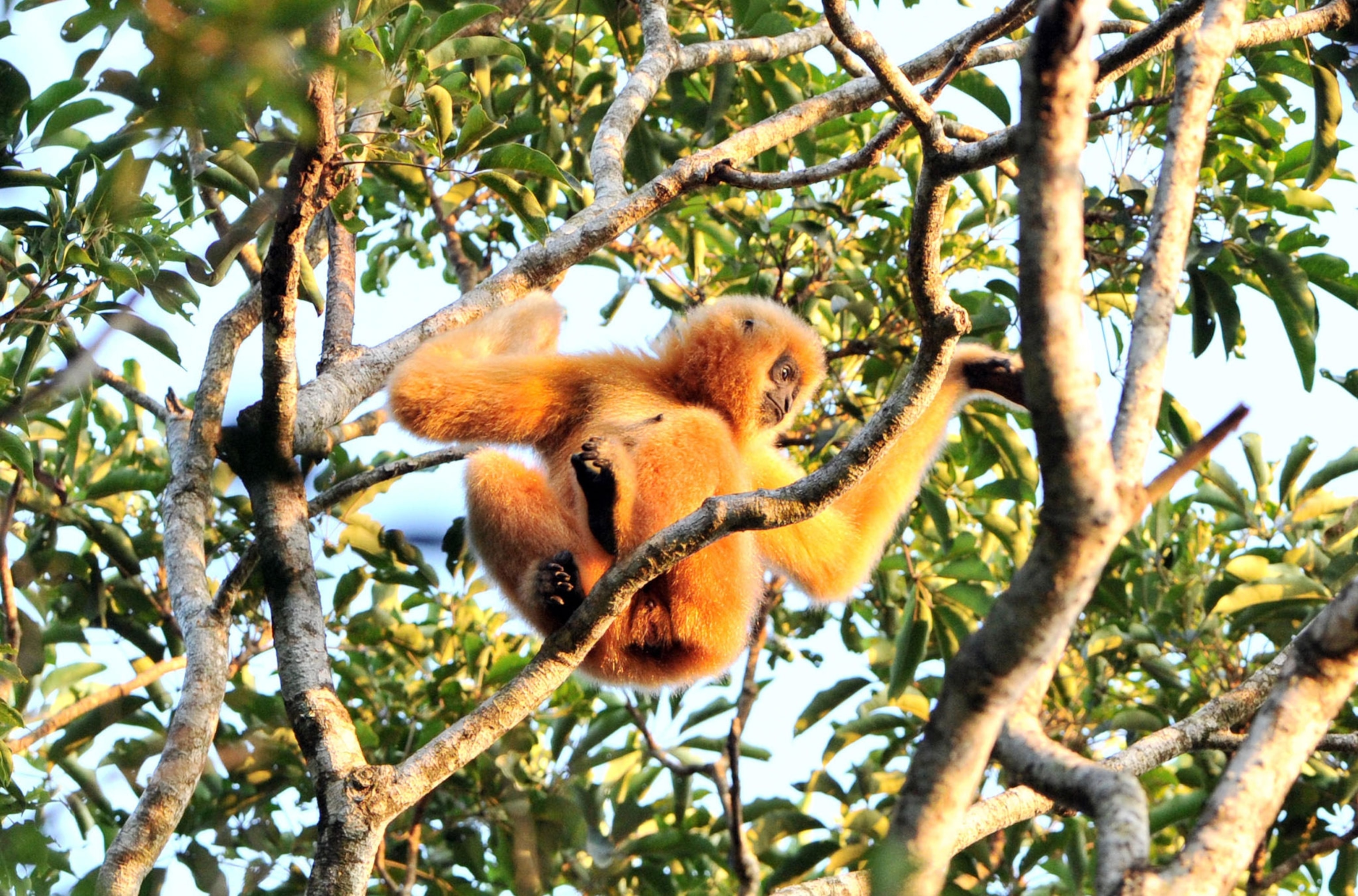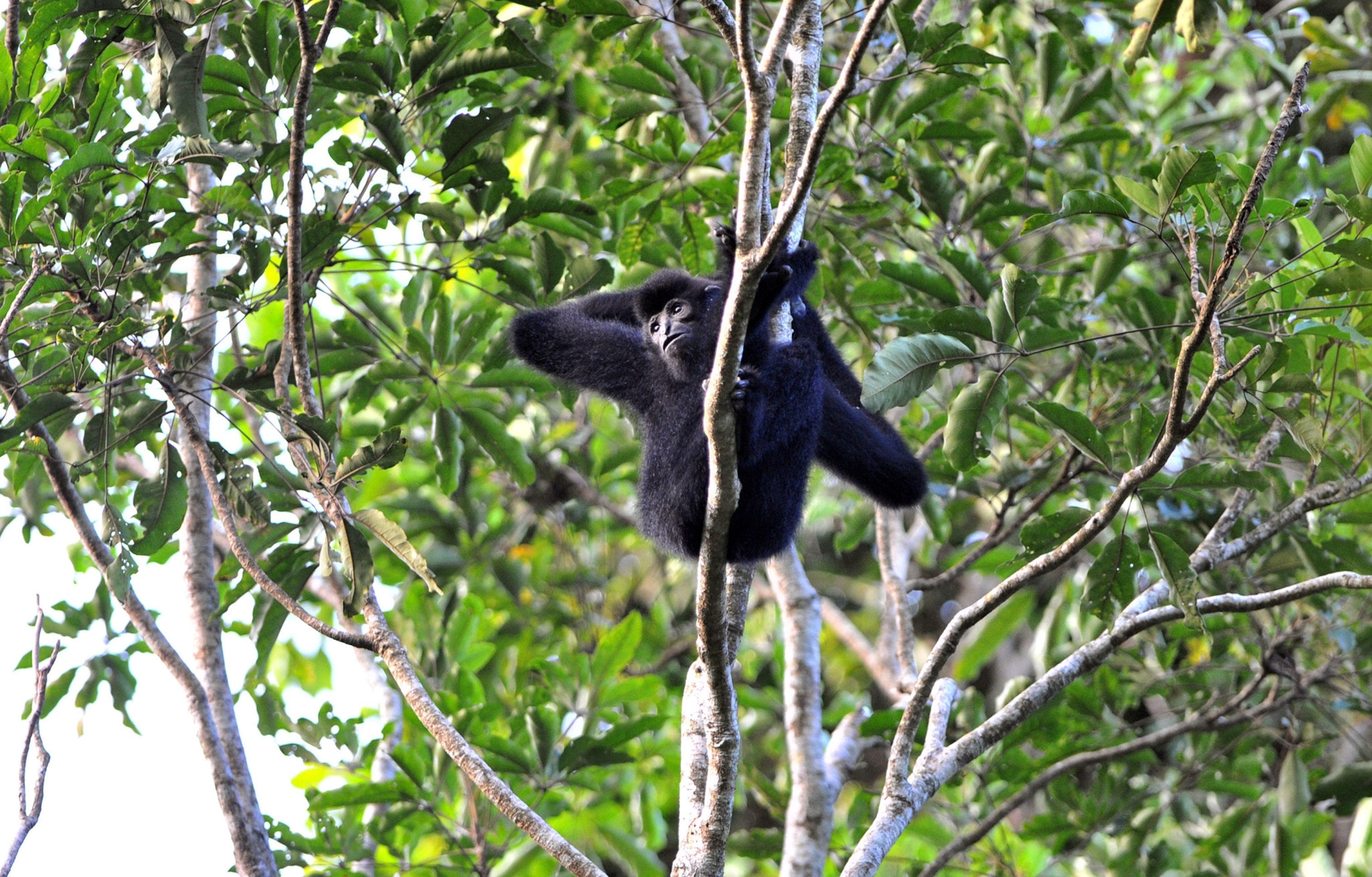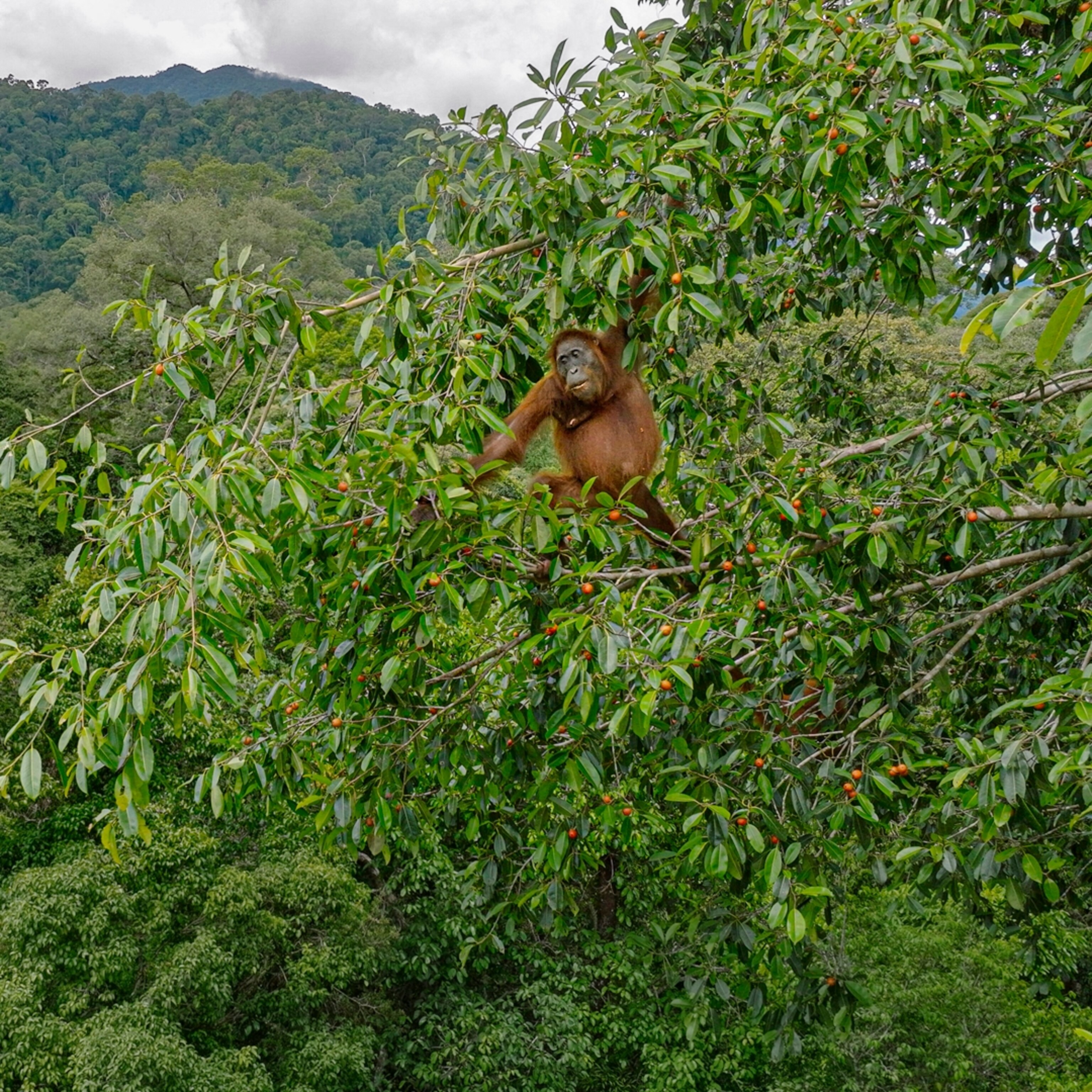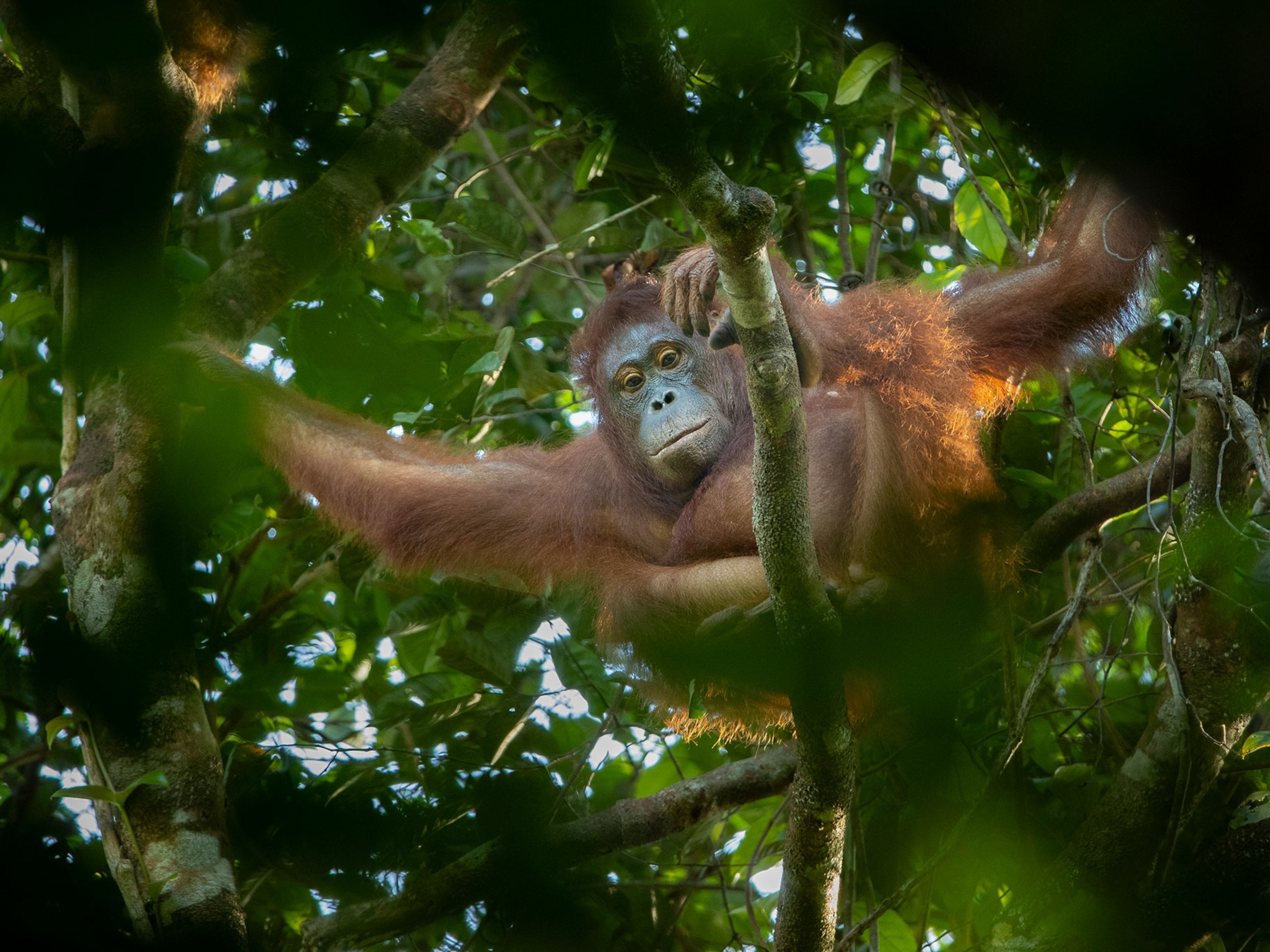
The World’s Rarest Ape Lives—and Sings—on a Chinese Island
Scientists are trying to save the Hainan gibbon, which was once boiled for gibbon paste. But first they have to find the elusive apes.
HONG KONG — When dawn breaks on Futou Ling, a mountain on Hainan Island off China’s south coast, the last remaining gibbons begin to sing.
Males climb to the treetops, where their voices will carry the farthest, and start warbling, hooting, and shrieking. Females and youngsters join in, creating an intense musical cacophony that fills the tropical forest.
Samuel Turvey and Jessica Bryant are ready at their listening posts. When they hear the song of the gibbons, they run toward it.
“The Hainan gibbon,” says Turvey, a senior research fellow at the Zoological Society of London, “is the world’s rarest ape, the world’s rarest primate and, almost certainly, the world’s rarest mammal.” (Only three northern white rhinos remain, but that is a subspecies of white rhino.)
Some 28 gibbons survive in a six-square-mile (16-square-kilometer) patch of rainforest in Bawangling National Nature Reserve, in western Hainan. They are found nowhere else. With such a tiny population, there’s a high risk of a random catastrophic event—a typhoon, a forest fire, an outbreak of infectious disease —wiping out the entire species.
On November 24, when the International Union for Conservation of Nature released its latest report on the world’s 25 most endangered primates, the Hainan gibbon figured prominently, with the lowest recorded numbers of any species. Turvey and Bryant’s sprint through the forest is part of an international conservation effort to prevent the gibbons becoming the first primate to be driven extinct by humans. The researchers’ aim is to fully understand the lives and needs of these little-known apes, so they can work out the best plan to save them.
But first they have to find them.
The Threats: Deforestation and Gibbon Paste
Weighing in at around 17 pounds (8 kilograms), the Hainan gibbon spends its entire life up in the canopy. Males and younger individuals of both sexes have black fur; adult females are a lustrous, orangey gold.
Family groups typically comprise a male, two females, and their babies, although several young “solitaries” that haven’t yet found a mate roam the forest alone.

Historically, Hainan was home to thousands of gibbons. The species was devastated by poaching—a gluey paste, made from boiling the whole animal, was used as a general tonic in Chinese medicine—and by deforestation. From the 1960s, the forest was selectively logged for valuable timber, such as rosewood, and clear-cut to make way for state-owned rubber plantations.
As lowland rainforest disappeared, the gibbons were pushed up to higher altitudes. Here, the tropical trees that produce the gibbons’ favorite foods— soft, sugar-rich fruit, including wild lychees, rambutans, and figs—give way to oak trees, and the gibbons must supplement their diet with , leaves, shoots, and insects. “We don’t know what impact this sub-optimal habitat has on the population,” says Turvey, “but it may be putting them under increased stress.”
Bushwhacking for Gibbon Scat
Jessica Bryant has spent several seasons, both rainy and dry, tracking the gibbons. She and her colleagues start their day at 4 a.m. with a quick bowl of congee (a thick rice porridge that’s a Chinese breakfast staple), then hike an hour up to the ridgeline. As the sun cracks the horizon, the gibbons burst into song.
“Every gibbon species has a slightly different call,” says Bryant. “In my opinion, the Hainan gibbon’s haunting song is the most beautiful of all.”
The scientists don’t have long to locate the gibbons before they fall silent. “If we don’t find them in time, we have to wait another one or two hours until they sing again,” says Bryant. “And when it’s raining they don’t sing. They’ll head to the lower branches, take shelter under some leaves and huddle together looking grumpy.”
Having found the gibbons, the team follows them. The apes use powerful arms and long fingers to swoop from tree to tree with acrobatic grace. A hundred feet below, it’s a very different scene: The scientists are scrambling uphill and down, whacking through undergrowth, being scratched by thorns and persecuted by leeches.

All this for the purpose of gathering gibbon scat—a task that requires keen eyes. “The feces drops a long way down from the canopy, bouncing off branches and breaking into small fragments before hitting the ground,” Bryant says. “It’s really hard to spot in amongst the vegetation and leaf litter.” But the scat, if she can find it, yields DNA that reveals the sex of the gibbons.
The overall goal is an accurate census of the Hainan gibbon’s dwindling population and of its prospects for rebounding. “If we can find out how many there are, and where they live, we can focus on protecting and reforesting those areas,” Bryant says.
More Endangered Than Pandas
Running parallel to the scientific research is an effort to drum up support for the gibbons among people who used to sell them for gibbon paste. The eastern flank of Futou Ling “is an extremely poor area,” says Bosco Chan, head of the China Conservation department at Kadoorie Farm and Botanic Garden (KFBG) in Hong Kong. “Previously, the villagers made money from rubber, but the market price has dropped. And they used rainforest products freely for generations—collecting timber and rattan for construction, hunting animals, and gathering fruits, herbs, mushrooms, and other ‘jungle foods’.”
Chan’s KFBG team is helping the villagers develop sustainable agriculture—raising pigs, beekeeping, and cultivating Alpinia oxyphylla, a highly-prized, ginger-like medicinal herb that grows under the rubber trees. “We cannot simply bar locals from the forest,” Chan says. “To avoid conflict, we try to bring benefits as well as enforcing rules.”
To enforce the rules against poaching, KFBG has hired influential local men as park rangers. It seems to be working. “Once in a while people are caught with rifles [illegal in China], or dead squirrels or deer, but as far as we know, no gibbons have been killed recently,” says Chan. The rangers have also helped plant more than 80,000 fast-growing native fruit trees to reforest the lower slopes.
Meanwhile, to raise public awareness, Chan’s team has sponsored gibbon-themed village fêtes, published a gibbon picture book, and handed out gibbon-adorned fai chun—the red banners hung on doorways at Chinese New Year. “Many local children were aware of the plight of China’s giant pandas,” Chan says, “but had no idea that a far more endangered species was living on their doorstep.”
Building Bridges
Starting next year, Turvey and Bryant plan to build canopy bridges to help the gibbons, which are clumsy on the ground, move through the fragmented forest. And with international help, including from the Durrell Wildlife Conservation Trust, they’re drawing up an emergency response plan to keep the gibbons from being wiped out by a storm or other calamity. Richard Young of the Durrell Trust has seen situations this dire before. “The Mauritius kestrel was down to four individuals when we stepped in,” he says. “Their population now stands at 400. So we know what’s possible.”
Last summer Jessica Bryant began experimenting with a new technique for finding gibbons, especially the solitaries that rarely sing: She broadcasts recordings of gibbon song. On the first trial, a male called back. The team tracked him and found that he wasn’t solitary after all. He had a female and baby with him. The discovery boosted the number of known breeding groups from three to four.
“I was overjoyed,” says Bryant. “I’ve been working on the species for five years, and it has been a great privilege, but also tremendously difficult. This kind of breakthrough makes it all worthwhile.”
Follow Sarah Lazarus on Twitter.








